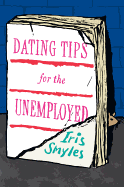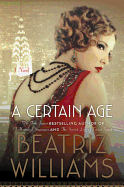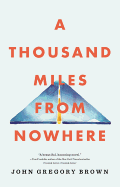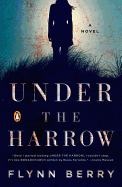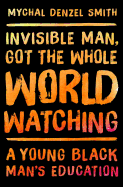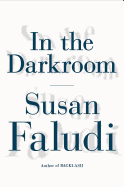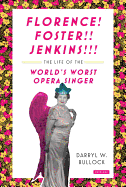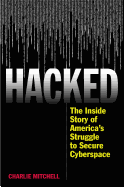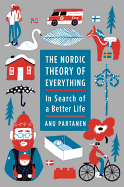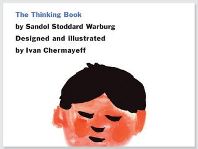 |
| photo: Baljit Singh |
When Rupi Kaur was five, her mother handed her a paintbrush and said, "Draw your heart out." She views her life as an exploration of that artistic journey. Through her poetry and illustrations she engages with love, loss, trauma, healing and femininity. For Kaur, writing has always been a collective experience. At the age of 17 she began sharing her work. The stage was her first love and spoken word is where she found her voice. Kaur pursued her love for language by studying rhetoric at the University of Waterloo in Ontario, Canada. She began working on her first collection, milk and honey (Andrews McMeel), which became a New York Times bestseller and has 400,000 copies in print. Kaur's passion is expression, and for her that takes many forms. Her photography and art direction are brought to various spaces around the world and her poetry and prose are breaking international boundaries.
Much of your work comes from a place of love, yet you are not afraid to engage with anger. What purpose does anger serve in your creative process? And what happens to anger when you choose to be vulnerable?
I realized very early that I had to engage with my anger. Some of the earliest work I put into the world was very visceral. Once I began writing, all the emotions came. I learned about them and myself. Each emotion impacts you differently. I learned anger is real and I needed to engage with that anger if I wanted to engage with love.
Anger is also scary. When I am writing on anger, it is difficult to come back sometimes. So I talk with myself. I reason that life, love and relationships are so multi-dimensional. For me to write honestly about each, I cannot pretend that it's all fairytales and rainbows. There is anger. There is resentment. There is bitterness. That's the reality and that's what I want to show.
When I engage with anger, what's beautiful is I eventually reach a resolution. That's what happens when I choose to be vulnerable with my emotions. It changes into something, whether it is kindness, forgiveness--whatever. However, to arrive at this point, I have to go through my process of understanding.
The domestic scenes you describe in many of your poems confront and explore a generational cycle of silence women inherit and the harm it causes. Can you tell us more about how you came to identify such moments and what inspired you to write about it?
Silence is powerful. Figuring out the reason for silence is sometimes even more so. For so much of her existence, my mother and many like her have been told that what they have to say does not have meaning--it is not important, they are not important. There are so many different people and situations that have come and said these words to her. They and their voices are subdued.
I'm very observant. Even as a child, I analyzed and watched women and men in my life behave in certain ways with each other. After some time, you notice patterns. Why do these things keep happening? Why does my mother choose to stay silent when I know every part of her wants to shout? As I began to write, I began to explore this silence.
Healing from both emotion and physical wounds is a theme throughout your work. In what ways have you found healing to be a constant practice rather than a destination?
I'm the type to bury pain somewhere really deep inside, a place I've never ventured, and keep it there. Hidden. After the burial I go and bury myself in my work. Writing the book was facing the pain. Disregarding is not healing. You have to explore to heal, I think. I've had to forgive myself for being too hard on myself. After I wrote milk and honey I very much felt "healed." I thought I'd reached the destination. The purpose of milk and honey--to heal me--was complete. In the months that followed, when I was relentlessly triggered, there was a huge learning experience. Healing isn't a destination--it's something I have to consistently work on. This journey allowed me to forgive myself for so much. I'm learning to be my own best friend. Change the language I speak to myself. Understand why I think the things I do when I look at myself. I truly believe that I am the revolution I need. The belief that I am the most powerful thing in my life--that with my mind I can bring any change to my life. I'm practicing mindfulness and being grateful. It takes you to a balanced place where healing lives.
Each poem seems deeply personal and intimate. It's as though your words uncovered experiences I didn't know I had experienced. Many who have read milk and honey describe your work as "painful." What made you begin to share your poetry, and how did you feel about the ways people responded to it?
Living inside my body felt like screaming a silent scream. I would find empty rooms, pillows, elevators to scream into. No matter how loud the screams were, it always still felt silent. I don't know why I shared my work. I honestly have no idea what possessed me to do such a thing. I think perhaps I did it because I needed that scream to be heard.
It's actually very scary to watch people respond to your work. I think it's caused some of the most anxiety I have felt in recent years. It's undressing yourself and standing in front of a crowd.
In your poetry there is a growing sense of kinship with yourself and other women. What role does community play in your writing and art?
I didn't have a lot [of community] growing up but I was rich in that I had my two incredible sisters and a solid girlfriend or two. We were abundant when together and no matter what I "lacked," because of them I lacked nothing. We understand each other's pains--we are in this together. Women have been a strong part of my healing so in chapter four--"the healing"--there's a natural sense of kinship.
Early on when I began to share my poetry I was writing about abuse and rape. It was other women who were my strength. They would reach out, send letters, post comments about how the poetry allowed them to feel proud to be women. How they had experienced such pains but for the first time since, they wanted to own their womanhood rather than be ashamed of it.
Your poems often feel like a call to action, a plea for women to realize themselves outside the boundaries others would give them. Is this the case, and if so can you explain more about why you chose to write about this?
I was never really writing for anyone other than myself--so it's interesting that you say that and it also makes sense. I guess the poems were a call to action for myself. For me to realize that I'm outside the boundaries others have placed on me. They're self reminders--but after sharing them you realize they become self reminders for others too. This is something we are all struggling with.
Like many others, I was first introduced to your work through your piece titled "period." A photograph showed you in bed during your menstrual cycle and blood was visible on your pants. Since then your art continues to challenge themes of censorship. What experiences in your life have motivated you to confront them, and what value is to be found in confronting the taboo?
It's so funny to me--periods are so natural that I often wonder how they even fall under the category of taboo. What my body does naturally once a month is so not taboo! And I think that's what drives the passion. It's not about challenging taboos for the sake of being controversial. It is allowing our bodies to breathe in this world. I did that project as a way to teach myself how to celebrate my body while on my period. I was so tired of feeling like I was "unlucky" or "wishing I was a man." So, "period." was me working through this. Not for a second did I think that it would be censored. In my mind it's the most natural thing. I see now how naïve I was. I just can't keep my mouth shut.
It seems as though you have a lot of direction and ambition, and I'm excited to see what new art you share with the world. How would you like to be remembered? Alternatively, how would you like milk and honey to be remembered?
I want to leave behind a literary legacy that will show readers how powerful they are. How they are the revolution they've been waiting for. I want my writings to captivate and fill them with love. milk and honey is the first of many. A strong first. I could not have asked the universe for a better first. --Justus Joseph
Rupi Kaur: A Balanced Place Where Healing Lives
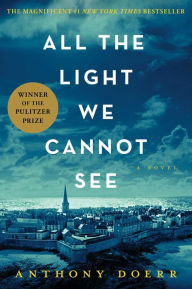 Anthony Doerr's All the Light We Cannot See is a sweeping, sensory story of two young people in very different places during World War II. Its many layers make for prime book club discussion--and if that time period appeals to club readers, there is no shortage of excellent novels that explore this subject.
Anthony Doerr's All the Light We Cannot See is a sweeping, sensory story of two young people in very different places during World War II. Its many layers make for prime book club discussion--and if that time period appeals to club readers, there is no shortage of excellent novels that explore this subject.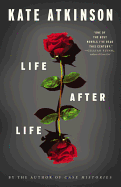 Kate Atkinson's Life After Life is not strictly a World War II novel; it tells the story of Ursula, a woman who lives her life on repeat. Continually dying and being reborn in the English countryside on February 11, 1910, Ursula lives each life slightly differently: she dies at birth; she drowns as a child; she lives to shoot Hitler. Though her lives vary, she is repeatedly thrown back into London during the Luftwaffe bombings--and Atkinson's depictions of the horrors of this terrifying time of the war are as powerful as any nonfiction account of the Blitz. The touch of science fiction here promises to make a discussion of the time period all the more interesting.
Kate Atkinson's Life After Life is not strictly a World War II novel; it tells the story of Ursula, a woman who lives her life on repeat. Continually dying and being reborn in the English countryside on February 11, 1910, Ursula lives each life slightly differently: she dies at birth; she drowns as a child; she lives to shoot Hitler. Though her lives vary, she is repeatedly thrown back into London during the Luftwaffe bombings--and Atkinson's depictions of the horrors of this terrifying time of the war are as powerful as any nonfiction account of the Blitz. The touch of science fiction here promises to make a discussion of the time period all the more interesting.





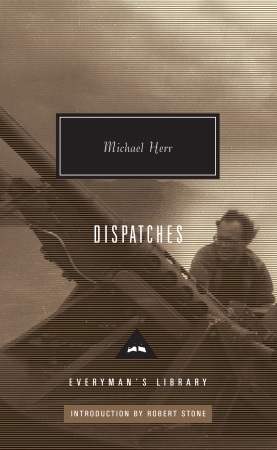 War correspondent, author and screen writer Michael Herr died last week at age 76. Between 1967 and 1969, Herr served was a correspondent for Esquire magazine in the Vietnam War. In 1977, he published Dispatches, a vivid, visceral account of his wartime experience that was among the first works to bring Vietnam's horrors home to American audiences. Herr was a contributor to Apocalypse Now and co-wrote the screenplay for Full Metal Jacket alongside Stanley Kubrick and author Gustav Hasford. After Kubrick's death in 1999, Herr wrote two Vanity Fair articles about the director, which later became the biography Kubrick (2000). He also wrote a fictionalized biography of newsman Walter Winchell, Walter Winchell: A Novel (1990).
War correspondent, author and screen writer Michael Herr died last week at age 76. Between 1967 and 1969, Herr served was a correspondent for Esquire magazine in the Vietnam War. In 1977, he published Dispatches, a vivid, visceral account of his wartime experience that was among the first works to bring Vietnam's horrors home to American audiences. Herr was a contributor to Apocalypse Now and co-wrote the screenplay for Full Metal Jacket alongside Stanley Kubrick and author Gustav Hasford. After Kubrick's death in 1999, Herr wrote two Vanity Fair articles about the director, which later became the biography Kubrick (2000). He also wrote a fictionalized biography of newsman Walter Winchell, Walter Winchell: A Novel (1990).